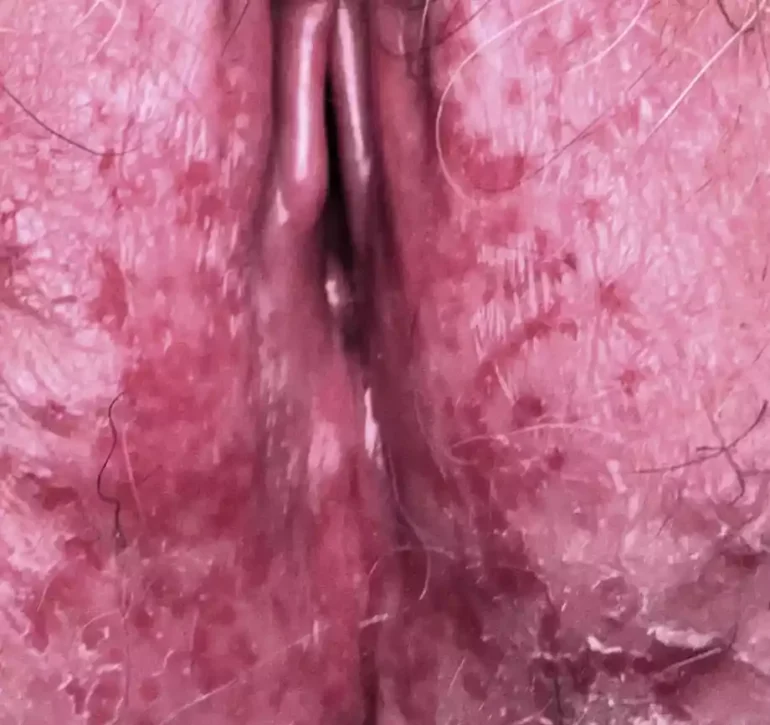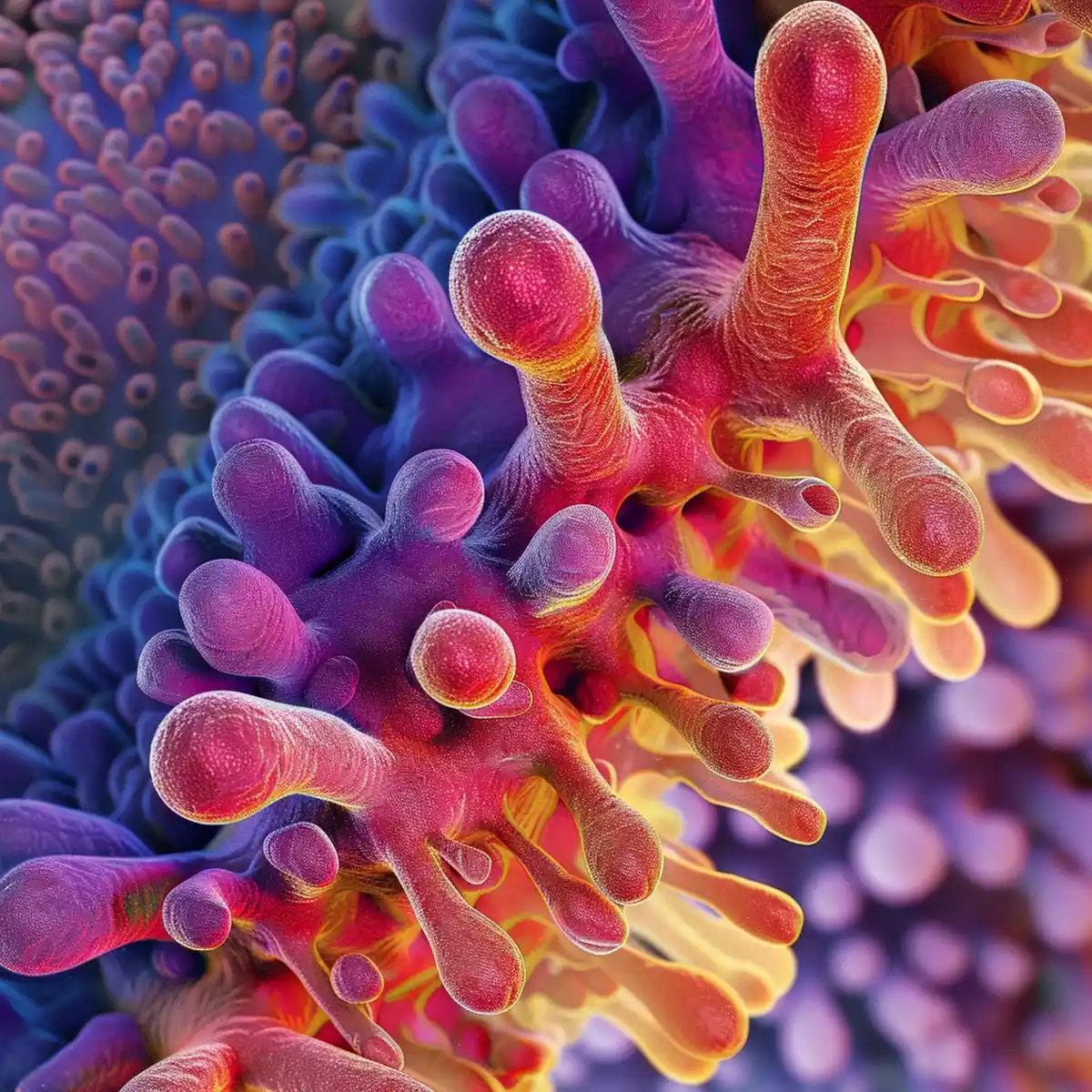
Vaginal yeast infection, also known as candidiasis, are a common fungal infection affecting millions of women worldwide. Recent studies have shed light on the causes, risk factors, and effective management strategies for this prevalent condition (Blaganje and Barbič, 2020; Chatzivasileiou and Vyzantiadis, 2019). A vaginal yeast infection occurs when the delicate balance of microorganisms in the vagina is disrupted, allowing the overgrowth of Candida species, primarily Candida albicans. This article explores the current understanding of vaginal yeast infections, drawing upon the latest research to provide comprehensive insights into this often-recurring issue.
Vaginal yeast infections are characterized by a range of symptoms, including itching, burning, and abnormal discharge. While occasional infections are common and generally not cause for concern, recurrent episodes can significantly impact a woman’s quality of life. Understanding the underlying causes and risk factors is crucial for developing effective prevention and treatment strategies.
Causes and Risk Factors of Vaginal Yeast Infections
Vaginal yeast infections occur when the delicate balance of microorganisms in the vagina is disrupted, allowing Candida species, particularly Candida albicans, to overgrow. This imbalance can be triggered by various factors, ranging from hormonal changes to certain medications and underlying health conditions (Blaganje and Barbič, 2020). Understanding these causes and risk factors is crucial for developing targeted prevention strategies and minimizing the recurrence of vaginal yeast infections.
Disruption of Vaginal Flora
The vaginal microbiome is a complex ecosystem, primarily dominated by beneficial lactobacilli. These bacteria play a vital role in maintaining a healthy vaginal environment by producing lactic acid, which helps maintain an acidic pH and inhibits the growth of pathogenic organisms. However, when the delicate balance of the vaginal flora is disrupted, it creates an opportunity for Candida species to thrive and cause infection (Superti and De Seta, 2020). Factors that can disrupt this balance include douching, using scented feminine hygiene products, and wearing tight-fitting, non-breathable clothing.
Hormonal Changes and Pregnancy
Hormonal fluctuations, particularly during pregnancy, menstruation, or while using hormonal contraceptives, can significantly influence the vaginal environment. Elevated estrogen levels can increase glycogen production in the vaginal epithelial cells, providing a favorable substrate for Candida growth. Pregnancy, in particular, is a significant risk factor for vaginal yeast infections, as the increased estrogen levels and changes in the immune system make women more susceptible to candidiasis (Chatzivasileiou and Vyzantiadis, 2019). Menopausal women may also experience an increased risk of yeast infections due to the decline in estrogen levels and subsequent changes in vaginal pH.
Antibiotics and Immunosuppression
Antibiotics, while effectively treating bacterial infections, can inadvertently disrupt the delicate balance of the vaginal microbiome. By eliminating beneficial lactobacilli alongside pathogenic bacteria, antibiotics create an environment conducive to Candida overgrowth. This is particularly true for broad-spectrum antibiotics, which target a wide range of bacteria. Immunosuppression, whether due to underlying health conditions such as diabetes or HIV/AIDS, or the use of immunosuppressive medications, can also increase the risk of vaginal yeast infections. A weakened immune system may struggle to keep Candida populations in check, allowing the fungus to proliferate unchecked.
Recognizing and addressing these causes and risk factors is essential for preventing and managing vaginal yeast infections. Women can take proactive steps to maintain a healthy vaginal environment by avoiding douching, using mild, unscented feminine hygiene products, and wearing breathable, cotton underwear. Those with recurrent infections should consult their healthcare provider to identify and address any underlying factors contributing to their increased susceptibility. By understanding the complex interplay of hormones, microbial balance, and immune function, women can empower themselves to maintain optimal vaginal health and minimize the impact of yeast infections on their quality of life.
Symptoms and Diagnosis
Vaginal yeast infections present with a range of symptoms that can vary in severity from mild discomfort to significant irritation. Recognizing these symptoms is crucial for prompt diagnosis and treatment, as untreated infections can lead to complications and a decreased quality of life. Healthcare providers rely on a combination of clinical presentation and laboratory testing to accurately diagnose vaginal yeast infections and rule out other potential causes of vaginal discomfort.
Common Signs and Symptoms
The hallmark symptoms of a vaginal yeast infection include intense itching and irritation in the vaginal area, often accompanied by a burning sensation, especially during urination or sexual intercourse. Women may also notice a thick, white, cottage cheese-like discharge that is typically odorless. The vaginal area may appear red and swollen, with visible cracks or sores in severe cases. Some women may experience pain or discomfort during intercourse or while inserting a tampon.
It is important to note that these symptoms can also be indicative of other vaginal infections or conditions, such as bacterial vaginosis or sexually transmitted infections (STIs). Therefore, self-diagnosis based on symptoms alone is not recommended, and women should consult their healthcare provider for an accurate diagnosis and appropriate treatment.
Differential Diagnosis
Differential diagnosis is the process of distinguishing vaginal yeast infections from other conditions that may present with similar symptoms. Healthcare providers must consider a range of possibilities, including bacterial vaginosis, trichomoniasis, and even non-infectious causes such as allergic reactions or dermatological conditions.
Bacterial vaginosis, for example, is characterized by a thin, grayish-white discharge with a strong, fishy odor, while trichomoniasis may present with a frothy, yellow-green discharge and more pronounced irritation. Allergic reactions to new soaps, detergents, or feminine hygiene products can cause vaginal itching and irritation, mimicking the symptoms of a yeast infection.
Laboratory Testing and Confirmation
To confirm the diagnosis of a vaginal yeast infection, healthcare providers may perform a pelvic exam and collect a sample of vaginal discharge for laboratory analysis. The sample is typically examined under a microscope to look for the presence of Candida fungal cells and to rule out other potential pathogens.
In some cases, a culture may be necessary to identify the specific Candida species responsible for the infection, particularly in cases of recurrent or treatment-resistant infections. This information can guide the selection of appropriate antifungal therapy and help identify any underlying factors contributing to the infection’s persistence.
Proper diagnosis is essential for ensuring that women receive the most effective treatment for their specific condition. By seeking prompt medical attention and openly discussing their symptoms with their healthcare provider, women can take an active role in their vaginal health and minimize the impact of yeast infections on their overall well-being.
Treatment and Prevention Strategies
Effective treatment and prevention of vaginal yeast infections involve a multi-faceted approach, combining antifungal medications, probiotics, and lifestyle modifications. By addressing the immediate symptoms and the underlying factors contributing to the infection, women can find relief and reduce the likelihood of recurrent episodes. It is essential to consult with a healthcare provider to determine the most appropriate course of treatment based on the severity and frequency of the infections.
Antifungal Medications
Antifungal medications are the mainstay of treatment for vaginal yeast infections. These medications are available in various forms, including creams, suppositories, and oral tablets. Over-the-counter antifungal creams and suppositories, such as miconazole and clotrimazole, are often sufficient for treating mild to moderate infections. These topical treatments are typically applied intravaginally for several days to eliminate the Candida overgrowth and relieve symptoms.
For more severe or recurrent infections, oral antifungal medications like fluconazole may be prescribed. These medications work systemically to eradicate the infection throughout the body. It is crucial to complete the entire course of treatment as directed, even if symptoms improve, to prevent the infection from recurring.
Probiotics and Lactoferrin
Probiotics, particularly lactobacilli strains, have shown promise in preventing and managing vaginal yeast infections. These beneficial bacteria help restore the natural balance of the vaginal microbiome, competing with Candida for resources and reducing the likelihood of overgrowth. Probiotic supplements containing Lactobacillus rhamnosus and Lactobacillus reuteri have demonstrated efficacy in reducing the recurrence of vaginal yeast infections (Superti and De Seta, 2020).
Lactoferrin, an iron-binding protein found in milk and other bodily fluids, has also been investigated for its potential role in preventing vaginal infections. Lactoferrin exhibits antifungal and antibacterial properties, helping to maintain a healthy vaginal environment. The combination of lactoferrin and lactobacilli may provide a synergistic effect in warding off recurrent yeast and bacterial vaginal infections (Chatzivasileiou and Vyzantiadis, 2019).
Lifestyle Modifications for Prevention
In addition to medical interventions, lifestyle modifications can play a significant role in preventing vaginal yeast infections. These changes focus on promoting a balanced vaginal environment and minimizing the factors that contribute to Candida overgrowth. Some key lifestyle modifications include:
- Wearing loose, breathable clothing and cotton underwear to reduce moisture and irritation
- Avoiding tight-fitting pants and leggings, especially for prolonged periods
- Changing out of wet clothing, such as swimsuits or sweaty workout gear, promptly
- Wiping from front to back after using the restroom to prevent the introduction of bacteria from the anus to the vagina
- Avoiding douching and scented feminine hygiene products, which can disrupt the natural vaginal flora
- Limiting sugar intake, as high blood sugar levels can promote Candida growth
- Considering alternative forms of contraception if hormonal methods are contributing to recurrent infections
By incorporating these lifestyle changes and working closely with their healthcare provider, women can take proactive steps to prevent vaginal yeast infections and maintain optimal vaginal health. Regular check-ups and open communication about symptoms can help identify and address any underlying factors contributing to recurrent infections, ultimately improving quality of life and overall well-being.
Conclusion
Vaginal yeast infections are a common and often distressing condition that affects countless women worldwide. By understanding the causes, risk factors, and symptoms associated with these infections, women can take proactive steps to maintain optimal vaginal health. Prompt diagnosis and appropriate treatment, whether through antifungal medications, probiotics, or lifestyle modifications, are crucial for alleviating symptoms and preventing recurrent episodes. As ongoing research continues to shed light on the complex interplay between the vaginal microbiome, immune function, and external factors, women can empower themselves with knowledge and work closely with their healthcare providers to develop personalized strategies for preventing and managing vaginal yeast infections. By prioritizing vaginal health and openly discussing concerns with medical professionals, women can reclaim their well-being and confidently navigate the challenges posed by this prevalent condition.
enofmedicines.com
Bibliography
- Blaganje, M., and M. Barbič. “Vaginal Yeast Colonisation: From a Potential Harmless Condition to Clinical Implications and Management Approaches—A Literature Review.” Current Bladder Dysfunction Reports, 2020, springer.com
- Chatzivasileiou, P., and T. A. Vyzantiadis. “Vaginal Yeast Infections: Epidemiology, Clinical Manifestations and Diagnosis.” Mycoses, 2019, onlinelibrary.wiley.com
- Superti, F., and F. De Seta. “Warding off Recurrent Yeast and Bacterial Vaginal Infections: Lactoferrin and Lactobacilli.” Microorganisms, 2020, mdpi.com
FAQ
What are the common symptoms of a vaginal yeast infection?
Common symptoms of vaginal yeast infections include intense itching, burning, redness, and swelling of the vaginal area, along with a thick, white, cottage cheese-like discharge that is typically odorless.
Can you get rid of a yeast infection in 24 hours?
While complete elimination of a yeast infection within 24 hours is unlikely, some over-the-counter antifungal treatments can provide relief from symptoms within a day. However, it's essential to continue treatment as directed.
What are the most effective treatments for vaginal yeast infections?
The most effective treatments for vaginal yeast infections include over-the-counter antifungal creams, suppositories, and oral medications like fluconazole. Probiotics and lifestyle changes can also help prevent recurrent infections.
What is the best cream for treating a vaginal yeast infection?
Over-the-counter antifungal creams such as miconazole and clotrimazole are highly effective in treating vaginal yeast infections. These creams are applied intravaginally for several days to eliminate the Candida overgrowth.
What does a yeast infection discharge look like?
Yeast infection discharge is typically thick, white, and clumpy, resembling cottage cheese. The discharge is usually odorless, but in some cases, it may have a slight yeasty smell.
Can vaginal yeast infections go away on their own?
While some mild yeast infections may resolve on their own, it's generally recommended to seek treatment to prevent complications and alleviate symptoms more quickly. Untreated infections can lead to more severe discomfort.
How can I prevent vaginal yeast infections?
To prevent vaginal yeast infections, wear loose, breathable clothing, avoid scented feminine hygiene products and douching, wipe from front to back after using the restroom, and consider probiotics to maintain a healthy vaginal microbiome.




